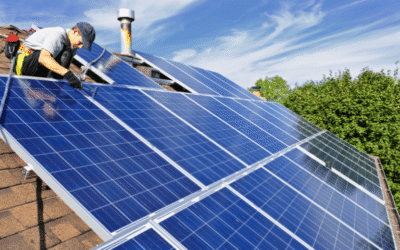Did you know there is an incandescent light bulb ban in some states? Does it apply to you? Well, do you live in California, Washington, or Nevada? If you do, some incandescent bulbs may be banned in your state.
So, which products are affected and how did we get to an incandescent bulb ban? We’ll answer these and other questions so you have a clear picture of what products are restricted, and which ones may be impacted in the future.
Incandescent Bulb Ban
You’ll find incandescent bulbs lighting up homes and commercial spaces. The bulbs or lamps are sold online and in stores unless they’re restricted in your state.
It seems like the bulbs never went away, so was there ever a ban? The answer is yes, there is but it never fully went into effect.
Federal Incandescent Ban
The Energy Independence and Security Act (EISA) was signed into law in 2007 by former President George W. Bush. In 2012 and 2014, the first part of the act went into effect to start phasing out 60-watt incandescent bulbs.
On January 1, 2020, the second part of the act was to take effect, but due to economic and pandemic restrictions, the Department of Energy decided to put it on hold.
The new regulations require light bulbs to use 65 percent less energy while delivering the same lumens rating. In response to the delay by the Department of Energy, several states decided to sue. Along with lawsuits against the federal agency, some states have passed and enacted their own bans.
Other states have also decided to ban the use of high-CRI linear fluorescents in most applications.
To learn more about the second part of the Energy Independence and Security Act that was to take effect in 2020, read our article here. We review the beginning and the end of the incandescent bulb ban.
Are Incandescent Bulbs Still for Sale?
You can still find incandescent bulbs for sale, even in states with bans. The type may be limited, but you will be able to find a few.
Manufacturers of incandescent bulbs are trying to meet EISA standards. Most incandescent bulbs are twice as efficient as they were in 2007. It is good news for the manufacturers right now, but the Department of Energy is expected to release new and stricter regulations in 2025.
Service lights (GSLs) will need a minimum efficacy of 45 lumens per watt. In layman’s terms, the bulb must produce more light than the energy it consumes. Currently, most halogen and incandescent bulbs do not meet these standards, but LEDs and CFLs can.
Expect a major shift to LED and CFL lighting over the next few years.
Did you know we have an entire series of articles to help you calculate your savings when converting your lighting to LED? We cover everything from maintenance savings, labor, energy, and more. There are 7 articles in the series, and you can find them all here.
What Type of Incandescent Bulbs Are Still Available?
The incandescent bulb ban in some states has had little effect on bulb manufacturers. Most retail outlets still offer upwards of 700 incandescent lighting products.
What has changed are the products. Incandescent bulbs now use up to 30 percent less energy. It is a promising start, but it comes with a few caveats.
- Some incandescent products are banned in certain states.
- Incandescent are exempt from EISA regulations, your bulb may not be energy efficient.
- Reducing wattage usage also changes the light’s color. Energy-efficient incandescent bulbs have a cooler color not everyone appreciates.
Comparing Incandescent Bulbs vs CFLs
Compact fluorescent lamps were the first serious competitors for incandescent bulbs. The bulbs are more energy-efficient but also have a few downsides consumers like to point out.
- CFLs contain the toxic metal mercury. It limits how you can recycle the bulbs.
- Many types of CFLs can’t dim, making them incompatible with dimming fixtures.
- Incandescent bulbs have a wider color rendering index.
- CFLs often have a spiral shape that can throw aesthetics off in some lamps.
We have an article dedicated to comparing the CFL vs. LED. You can find that article and more comparison articles here. We review the LED’s vs. mercury vapor, fluorescent, metal halide, and more.
Comparing Incandescent Bulbs vs LEDs
Prices have come down on LEDs, so now the bulbs are energy-efficient and affordable. The bulbs also have an extremely long lifespan, adding to their cost-effectiveness. LED bulbs are still five times as much as incandescent lights, but you save money in the long run.
LED bulbs last longer, so you save money on replacement costs. Utility costs are also lower, giving you additional savings. When you think about it, there’s no comparison between incandescent and LED bulbs. You’ll save more money using LED lights.
Summary of the Facts
Yes, some states have an incandescent ban, but it doesn’t apply to all bulbs. Incandescent bulbs are slowly being pushed out of the market. It will take several years, but the next set of regulations is coming out soon.
To discuss your lighting options with a lighting specialist, reach out to us here at Action Services Group, by calling 610-558-9773 or email [email protected]! We look forward to speaking with you.







































0 Comments